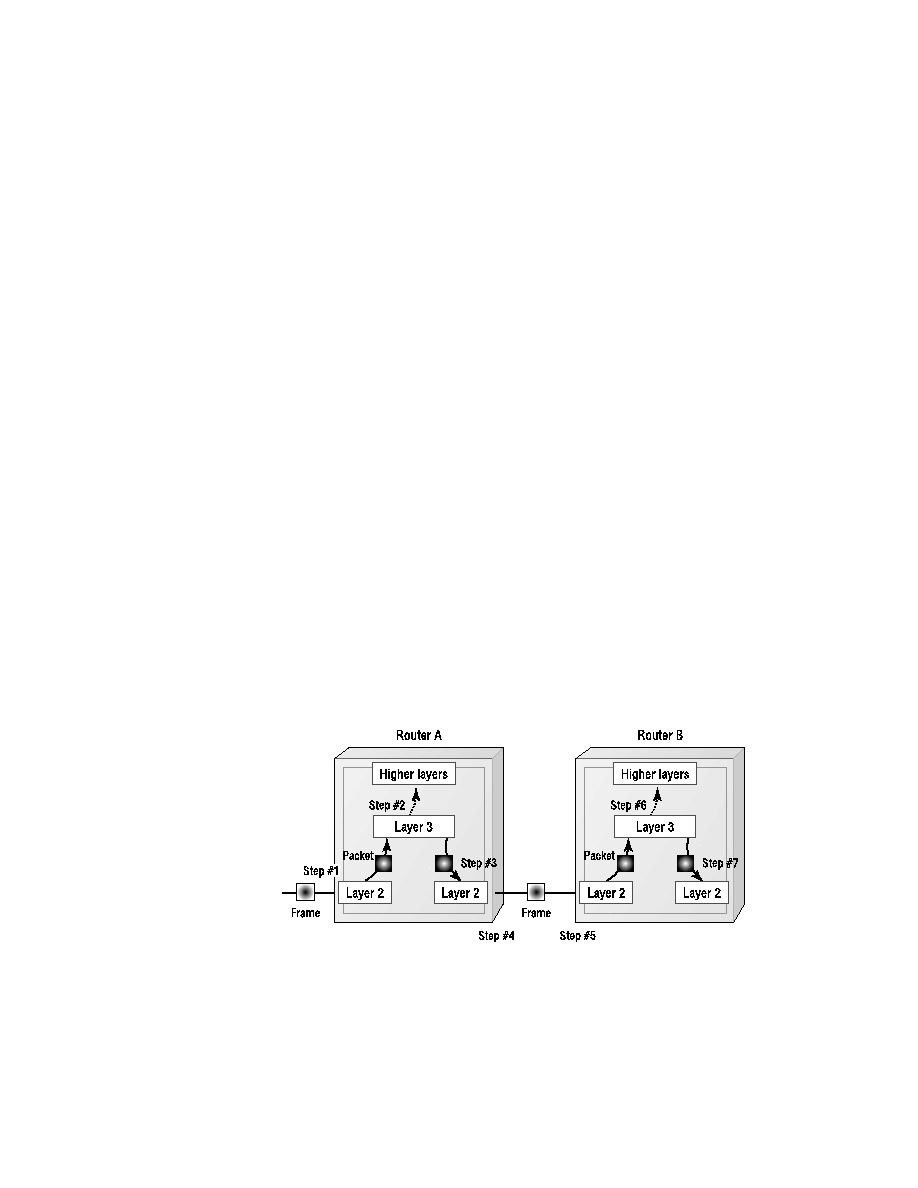
160
Chapter 4
Cisco's Diagnostic Commands
This is the basic routing process. For routes to be shared among adjacent
routers, a
routing protocol
must be used. Routing protocols are used so that
routers can calculate, learn, and advertise route table information.
Metrics
are associated with each route that is present in the route table. Metrics
are calculated by the routing protocol to define a cost of getting to the destination
address. Some algorithms use hop count (the number of routers between it and the
destination address), whereas others use a vector of values.
Once a metric is assigned to a route, a router advertises this information to all
adjacent routers. Thus, each router maintains a topology and map of how to get
to connected networks. By
connected
, I do not mean directly connected, simply
that there exists some type of network connection between the destination
address and the router.
The Switching Process
We now have an overview of how routing works. It is also important to
understand the intricate flow of a packet through routers in general. This
packet flow is considered to be switching. The description that follows is
meant to associate the routing process with the OSI model.
A router leads a pretty boring life (see Figure 4.2 for an example). When a
router receives a frame on any of its interfaces, it asks the question "Is this packet
for me?" After looking at the Layer 3 header, it sees the destination address and
answers its own question. At this point, there are only two possibilities: the packet
is intended for the router, or it is not.
F I G U R E 4 . 2
Packet flow through a router
Copyright ©2000 SYBEX , Inc., Alameda, CA
www.sybex.com
